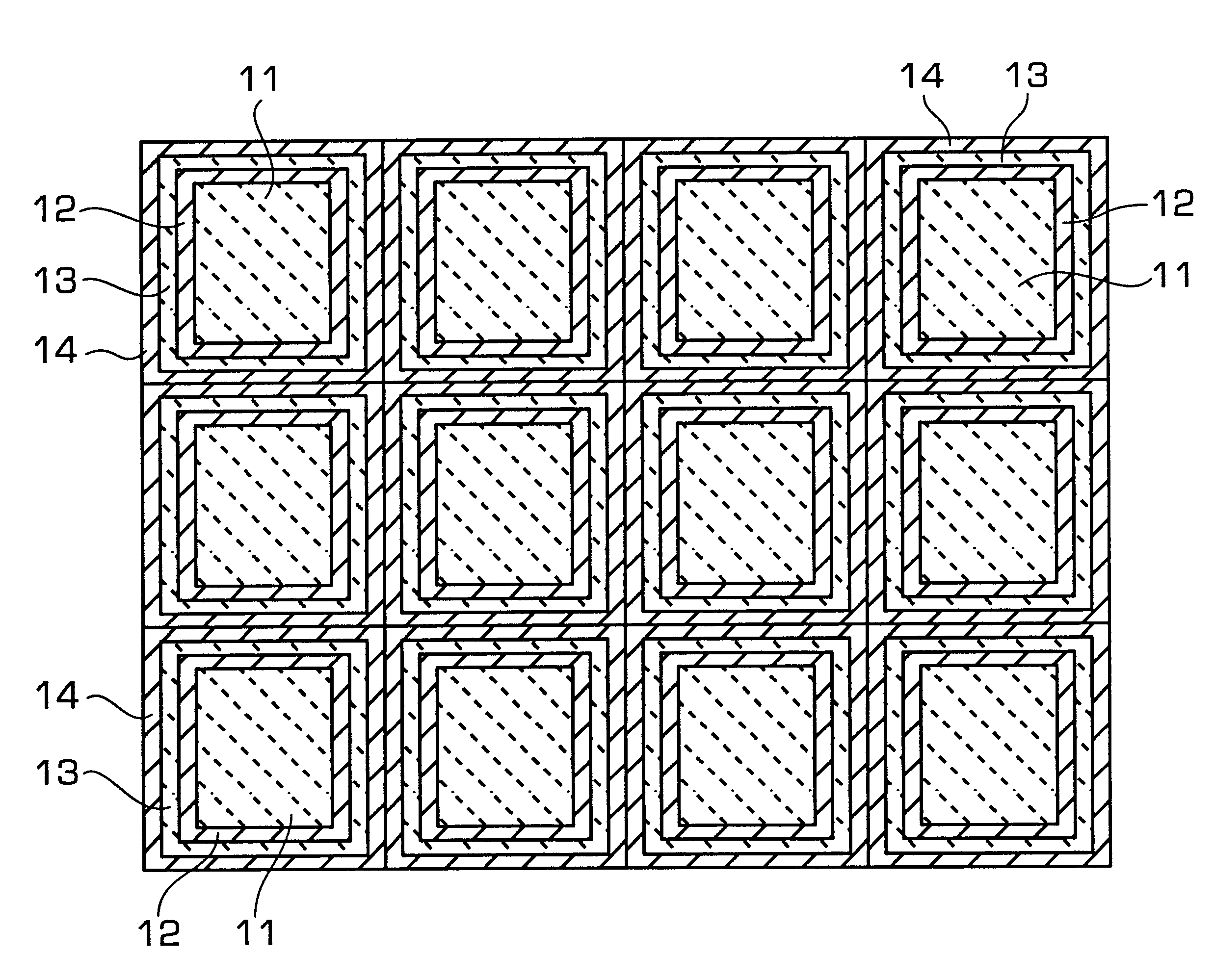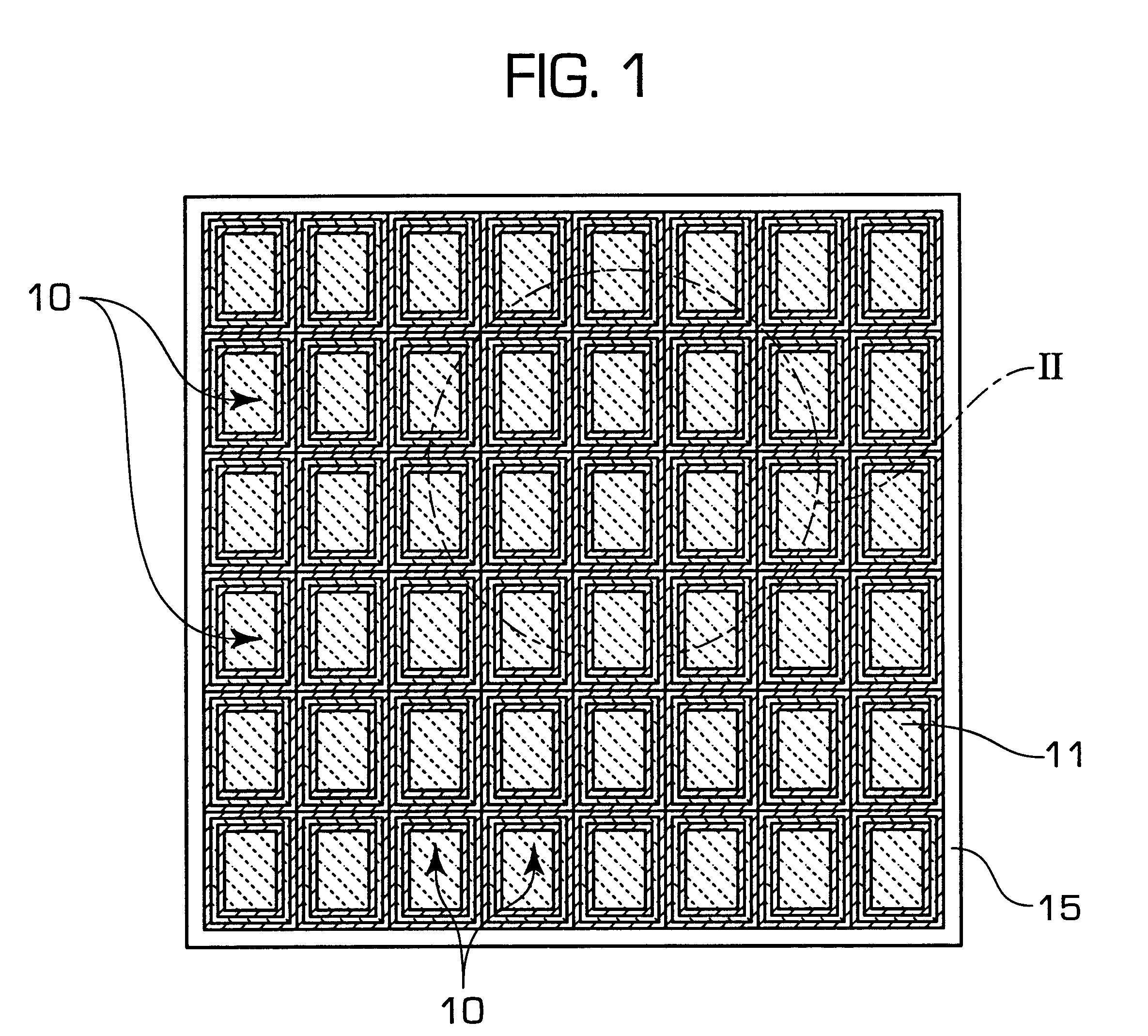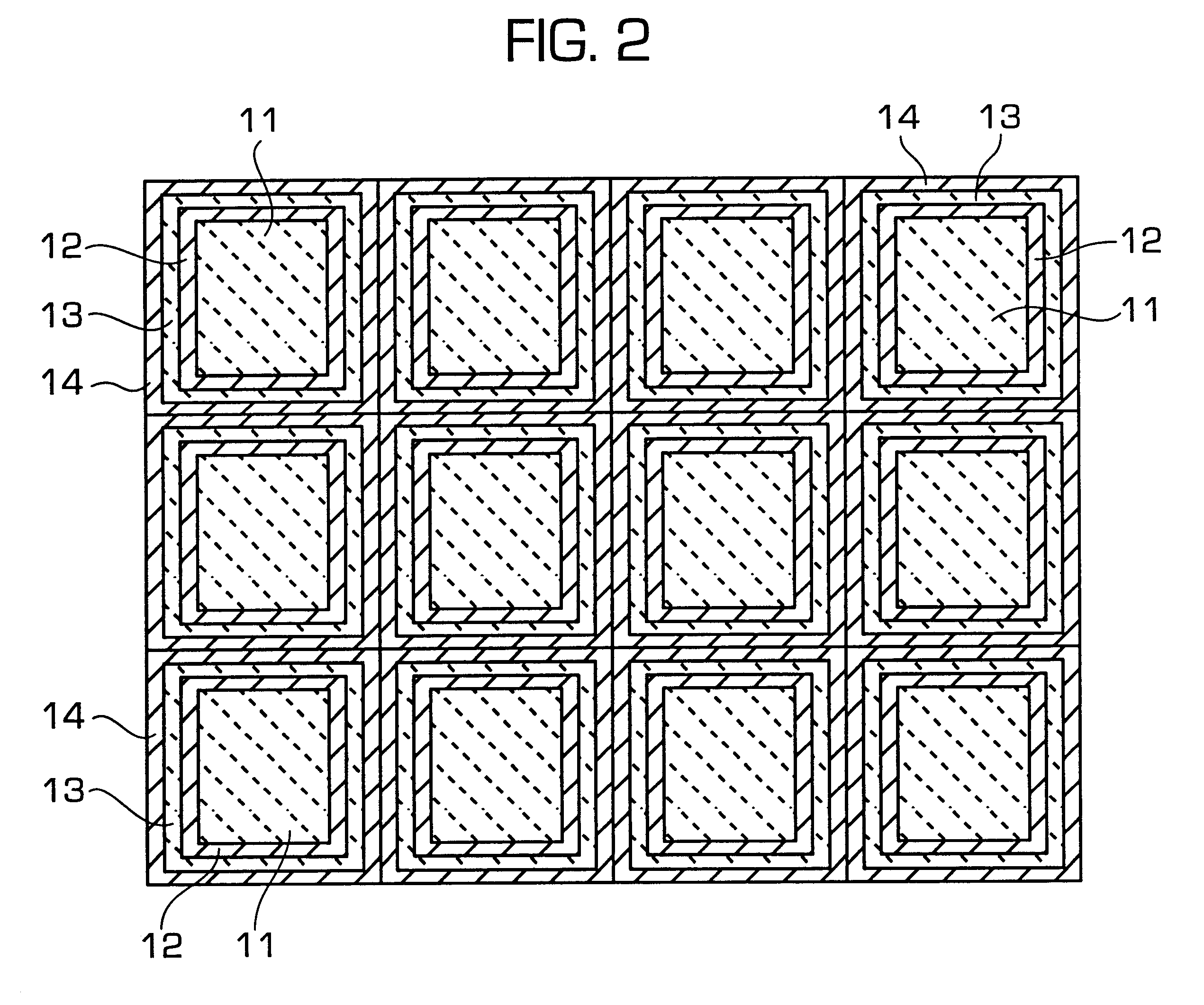Multifilament strand with Ag cladding and a coating of oxygen-permeable ceramic
a multi-filament strand and oxygen-permeable ceramic technology, applied in the direction of permanent superconductor devices, superconducting magnets/coils, magnetic bodies, etc., can solve the problems of power loss, inability to meet the requirements of mass production applications, and high cost of ag/pd alloy, etc., to achieve the effect of reducing the possibility of chemical problems
- Summary
- Abstract
- Description
- Claims
- Application Information
AI Technical Summary
Benefits of technology
Problems solved by technology
Method used
Image
Examples
Embodiment Construction
In the following description, "non-superconductive material" is used to mean a material which has no superconductive property at the operating temperature of HTc superconductors, i.e. its resistivity is not zero (about 2 m.OMEGA. / cm).
In addition, "permeable to oxygen" is used to mean that the material in question is in reversible equilibrium with oxygen. This means that the absorbed oxygen forms reversible oxides with the components of the material (as with Ag). As a result, if there is an oxygen demand from the precursors, the oxides release the oxygen to the precursors.
The invention relates to a powder in tube type method of making an HTc superconductive multi-filament strand having a silver-based matrix.
A powder in tube method comprises the following steps:
a monofilament step in which:
a first silver-based envelope is filled with powder reagents suitable, after heat treatment, for transforming into an HTc superconductive material; and
the resulting billet is drawn down into a monof...
PUM
| Property | Measurement | Unit |
|---|---|---|
| thickness | aaaaa | aaaaa |
| thickness | aaaaa | aaaaa |
| superconductive | aaaaa | aaaaa |
Abstract
Description
Claims
Application Information
 Login to View More
Login to View More - R&D
- Intellectual Property
- Life Sciences
- Materials
- Tech Scout
- Unparalleled Data Quality
- Higher Quality Content
- 60% Fewer Hallucinations
Browse by: Latest US Patents, China's latest patents, Technical Efficacy Thesaurus, Application Domain, Technology Topic, Popular Technical Reports.
© 2025 PatSnap. All rights reserved.Legal|Privacy policy|Modern Slavery Act Transparency Statement|Sitemap|About US| Contact US: help@patsnap.com



